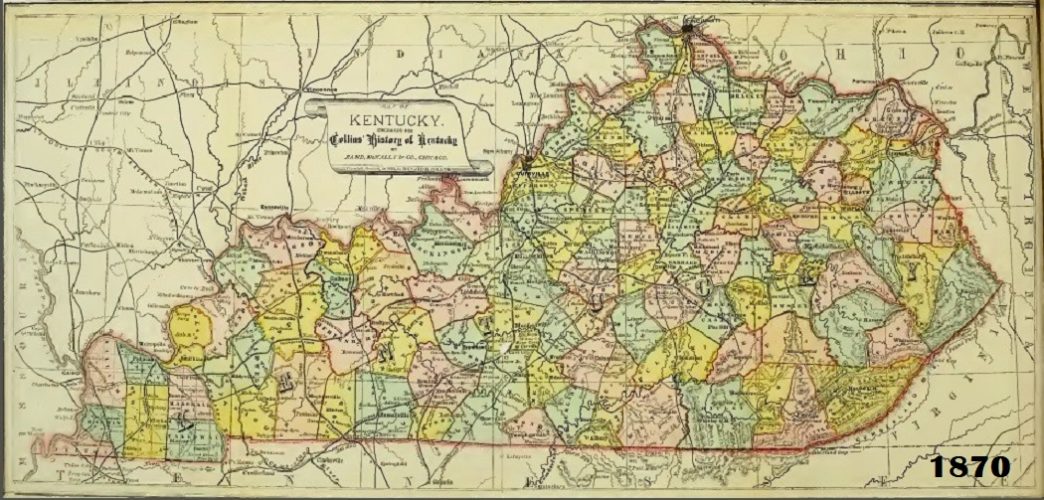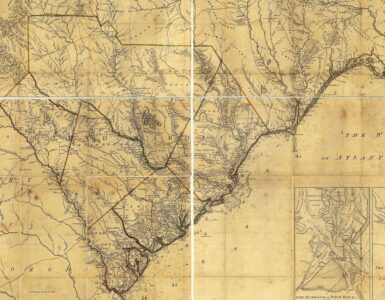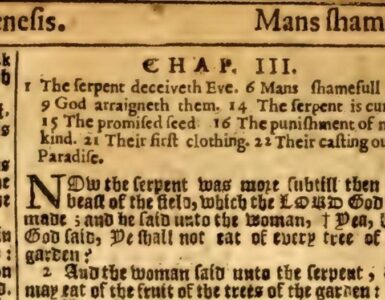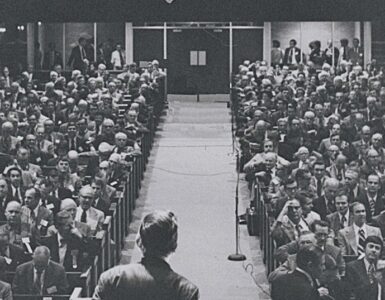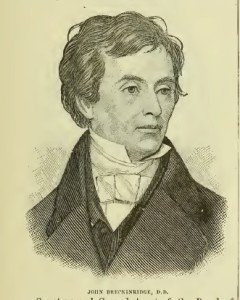 John was born July 4, 1797 to John and Mary (Cabell) Breckinridge at Cabell’s Dale near Lexington, Kentucky. His father would die in 1806 after serving in the Kentucky Legislature, the U.S. House & Senate, and as the Attorney General of the United States during the presidency of Thomas Jefferson. Coming from an affluent family, Breckinridge enjoyed the best preparatory education available in Kentucky in anticipation of attending Princeton College. Not only John but his brother Robert Jefferson would attend Princeton but an incident from their early years raises the question how these Kentuckians might adapt to New Jersey society. On one occasion, younger brother Robert poured salt in a blind cousin’s coffee. John was enraged and berated him. Robert pulled a butcher knife, but John, undaunted, evaded the blade and thoroughly thrashed him (Klotter, 42). Christianity for the Breckinridge family was yet to come, so hopefully the work of sanctification would rein in their tempers a bit.
John was born July 4, 1797 to John and Mary (Cabell) Breckinridge at Cabell’s Dale near Lexington, Kentucky. His father would die in 1806 after serving in the Kentucky Legislature, the U.S. House & Senate, and as the Attorney General of the United States during the presidency of Thomas Jefferson. Coming from an affluent family, Breckinridge enjoyed the best preparatory education available in Kentucky in anticipation of attending Princeton College. Not only John but his brother Robert Jefferson would attend Princeton but an incident from their early years raises the question how these Kentuckians might adapt to New Jersey society. On one occasion, younger brother Robert poured salt in a blind cousin’s coffee. John was enraged and berated him. Robert pulled a butcher knife, but John, undaunted, evaded the blade and thoroughly thrashed him (Klotter, 42). Christianity for the Breckinridge family was yet to come, so hopefully the work of sanctification would rein in their tempers a bit.
During John’s studies at Princeton he attended the campus revivals of 1815, became a member of the Presbyterian Church, and purposed to be a minister. The threesome of Charles Hodge, Breckinridge, and J. W. Alexander were devoted friends that would become influential in Presbyterianism during their years of ministry. They often met to discuss the latest in theology, politics, philosophy, and church news. John graduated Princeton College with honors in 1818, then remained in town serving as a tutor at the college. His family members were not Christians, so when he told them he was going to study theology in preparation for the ministry, they were against it because they had planned for his future in law. He apparently made his case and attended Princeton Seminary as a member of the class of 1822, which included 7 students given certificates of completion (i.e., graduated) and 18 others including Breckinridge that had incompletes.
Once licensed by the Presbytery of New Brunswick, August 1, 1822, his goal was foreign missions, but first he had to test his ministerial gifts. Friends of his father in Washington and other Breckinridges may have been influential in his being chosen chaplain of the United States House of Representatives, 1822-1823. The length of the chaplaincy was ideal for fulfilling the one-year requirement for licensure. In January 1823, John and Margaret Miller, eldest daughter of Professor Samuel Miller, were married. Their marriage would be blessed with six children, but only three would grow to maturity. For undetermined reasons, the Breckinridges were unable to become missionaries, so they left Princeton for Kentucky. John was ordained and installed by West Lexington Presbytery in the McChord (Second) Presbyterian Church in Lexington, September 10, 1823. Then in 1826, they moved to Baltimore so John could be installed associate pastor with Rev. John Glendy, an Irishman educated at the University of Glasgow who had more than forty years of pastoral experience. The installation service sermon delivered by Samuel Miller was titled, “Christian Weapons not Carnal, but Spiritual.” His passage was 2 Corinthians 10:4.
For the weapons of our warfare are not carnal, but mighty through God to the pulling down of strongholds.
Miller’s text would be a reminder for Breckinridge that the work of ministry was spiritual, and that successful ministry is achieved not through the flesh but through the Lord. Breckinridge was called to help aging Glendy and when his health became debilitatingly poor, he resigned leaving his associate to become senior pastor August 31, 1829. John did not stay long resigning in June 1831. All in all, it was a good experience because John had the opportunity to learn from Glendy’s experience and they both enjoyed the birth of their son, Samuel Miller Breckinridge.
The next call took him from pastoral ministry into administrative work with the General Assembly. The Breckinridges moved to Philadelphia so he could become Secretary and General Agent of the Board of Education in 1831. The Board had been established by the General Assembly in 1819 primarily for the purpose of directing financial assistance to ministerial candidates and oversee stewardship of their stipends. The funding was not only for seminary studies but could be used in the earlier years of a student’s education if he felt called to the ministry. The Board was a response to the continued calls from the presbyteries and concerned ministers for financial assistance for “poor and pious youths.” Associated with the Board was its Education Society that was developed later to direct a network of local societies organized by, ideally, congregations or presbyteries. As the societies developed some were connected to the Presbyterian Church in a minimal way, if at all. Some Societies were organized by men’s service groups and women’s organizations, an example of such support is seen in Zelotes Holmes who received 75.00 per year from a non-church education society in New York. As the years passed the Education Society of the Board developed ties with the American Education Society operated by the Congregationalists, and in 1831 the Board of Education’s society came under the American Education Society and was assigned the name Presbyterian Branch of the American Education Society. The American Education Society restricted the Presbyterian Branch to operations only in New York, New Jersey, and Pennsylvania. When Breckinridge became General Agent of the Board of Education there were only sixty candidates under its care. He resigned in 1836 leaving a much-improved Board with about a thousand students receiving assistance. The next move for the Breckinridges would be to the familiar streets, family, and faces of Princeton.
John Breckinridge was inaugurated Professor of Pastoral Theology and Missionary Instruction in Princeton Seminary, May 5, 1836. It was a short call ending with sadness because Margaret died June 16, 1838. Archibald Alexander preached the memorial sermon from Psalm 96:10, “Be still, and know that I am God.” As he spoke he looked around the congregation, made eye contact with family members, then addressed them without mentioning their names. One encouragement was clearly given to John Breckinridge.
I perceive one whose griefs are too great for utterance, and whose swelling bosom cannot be soothed, at this time, by any of the common topics of consolation. An officious intrusion into the sacred recess of such indescribable sorrows only serves to exacerbate, rather than mitigate the wounded spirit. All that the kindest friends can do in such a case is to let their warmest, tenderest sympathies fall in with the tide of overwhelming grief that rejects all consolation. “Weep with them that weep” [Rom. 12:15]. There is another thing which we can do, and that far more important, we can pray for our afflicted and bereaved brother. In such circumstances, prayer is almost our only refuge; for all our help must come from God. While the voice of man is powerless to afford relief, there is one who causes his voice to be heard even in the midst of the tempest. And his authoritative, his affectionate language to our beloved brother is, “Be still, and know that I am God.” [Also,] “God is our refuge and strength, a very present help in trouble.” It is somewhere related of that eminently pious reformer, Luther, that when he fell into any great trouble, he was wont to say to his friends, “Come, let us sing the forty-sixth psalm.”
The whole Princeton community was affected by Margaret’s death. At the General Assembly finished just before her death, John was appointed to a four-year term on the Board of Foreign Missions. The Board elected him the General Agent, which necessitated his resignation from Princeton Seminary (Minutes, 1839, 192). It was a timely transition in call possibly resulting from the Board’s sense that Breckinridge could not continue working within the Princeton community after Margaret’s death. It was an important time to work on the Board because the division of the Old and New Schools in 1837 meant the Old School Board’s work needed leadership that would address the remnants of Congregational influence. There was also need to transition from the days when the American Board of Commissioners for Foreign Missions (ABCFM) organized the Presbyterian missions. Breckinridge did not continue as General Agent for long because he resigned in 1839.
Due to declining health Breckinridge wintered in New Orleans and supplied the pulpit of First Church after turning down a full-time call. He married in 1840 Mary Ann Babcock, age nineteen, of Stonington, Connecticut. His sickness was particularly difficult for a preacher because it affected his throat. In the last months of life his preaching voice was so diminished that he could barely whisper. Rev. John Breckinridge, D.D., was visiting his Kentucky home when he died at the age of 44 on August 4, 1841. He died on the land where so many Breckinridges were born and would continue to be born. He is buried in the Lexington Cemetery, Fayette County, Kentucky. The author of the entry in Nevin’s Encyclopedia of the Presbyterian Church said of Breckinridge that his greatest strength was as an administrator with “unparallelled skill in organizing, and indefatigable zeal and energy directing the operations of the great benevolent agencies of the Church.”
Dr. Breckinridge did not write often in his brief life, but he did edit the Western Luminary briefly and wrote for the Biblical Repertory and Princeton Review an article in 1830 titled, “The Claims of Foreign Missions,” and then he provided another piece in 1832, “Sprague on Revivals of Religion.” Other literary efforts include: An Address Delivered July 15, 1835, Before the Eucleian and Philomathean Societies of the University of the City of New York, 1836; Controversy Between the Rev. John Hughes, of the Roman Catholic Church, and the Rev. John Breckinridge, of the Presbyterian Church, Relative to the Existing Differences in the Roman Catholic and Protestant Religions, 1833 (this is a debate in the form of letters between the two); Introductory Address of the Board of Education to Youth, 1832 (published in The Annual of the Board of Education of the General Assembly of the Presbyterian Church in the United States of America, Vol. 1, 1832); Ministerial Responsibility: A Discourse, The Substance of Which was Delivered before the Synod of Philadelphia, at its Late Meeting in Harrisburg, Oct. 1827, 1828; “On Christian Missions,” 1833 (published in The Spruce Street Lectures, Delivered by Several Clergymen, During the Autumn and Winter of 1831-1832, Breckinridge’s lecture begins on page 255); and a brief article titled, “The Substance of an Address Delivered at the Third Annual Meeting of the Lexington Female Bible Society,” 1826. Additional information about John Breckinridge as well as PDF copies of his writings are available on the Log College Press site at “John Breckinridge, (1797-1841).”
Breckinridge was granted the A.M. by Princeton College, 1822, and was honored with the Doctor of Divinity by Union College, 1835. He was a trustee of Princeton University, 1830-1841, and served on the Board of Directors of Princeton Seminary, 1832-1836. He gave his library to Princeton Seminary.
Barry Waugh
Notes—Neither of the two John Breckinridges—the subject of this biography nor his father, is the same as John C. Breckinridge who was vice president with President James Buchanan. For some information about the Education Society see, Constitution and Rules of the Presbyterian Education Society, Coordinate with the American Education Society, January 1833, New York: Printed by Daniel Fanshaw, 1833; there is a section about the beginnings and history. Klotter refers to James C. Klotter, The Breckinridges of Kentucky, Lexington: University of Kentucky Press, 1986, 2006. Other biographies of Breckinridges on this site include: Benjamin Breckinridge Warfield, and another brother of John, William Lewis Breckinridge. Samuel Miller, Jr., published in two volumes in 1869, The Life of Samuel Miller, D.D., LL.D. Robert Davidson, History of the Presbyterian Church in the State of Kentucky with a Preliminary Sketch of the Churches in the Valley of Virginia, New York: Robert Carter, 1847, pages 361-364, which is nearly duplicated in W. B. Sprague, Annals of the American Pulpit, Vol. 4, New York: Robert Carter, 1856, 1858, pages 645-651; History of the Second Presbyterian Church Lexington, Kentucky…1815-1965, published by the church, 1965; the article by Bradley J. Gundlach, “’B’ is for Breckinridge: Benjamin B. Warfield, His Maternal Kin, and Princeton Seminary,” in Gary L. W. Johnson, ed., B. B. Warfield: Essays on His Life and Thought, Phillipsburg: P&R, 2007, pages 13-53, provides guidance through the confusion of Breckinridges and tells the fascinating story of a remarkable family; One Hundred Years of History 1802-1902 Second Presbyterian Church Baltimore, Maryland, by Thomas Holmes Walker; One Hundred Fifty Years 1803-1953, Second Presbyterian Church, Baltimore, published by the church, 1953, and A Memorial of Mrs. Margaret Breckinridge in Two Parts, Part I. Memoir, and Funeral Sermon, Part 2, Letters to Her Surviving Children, Philadelphia: William S. Martien, 1839.


